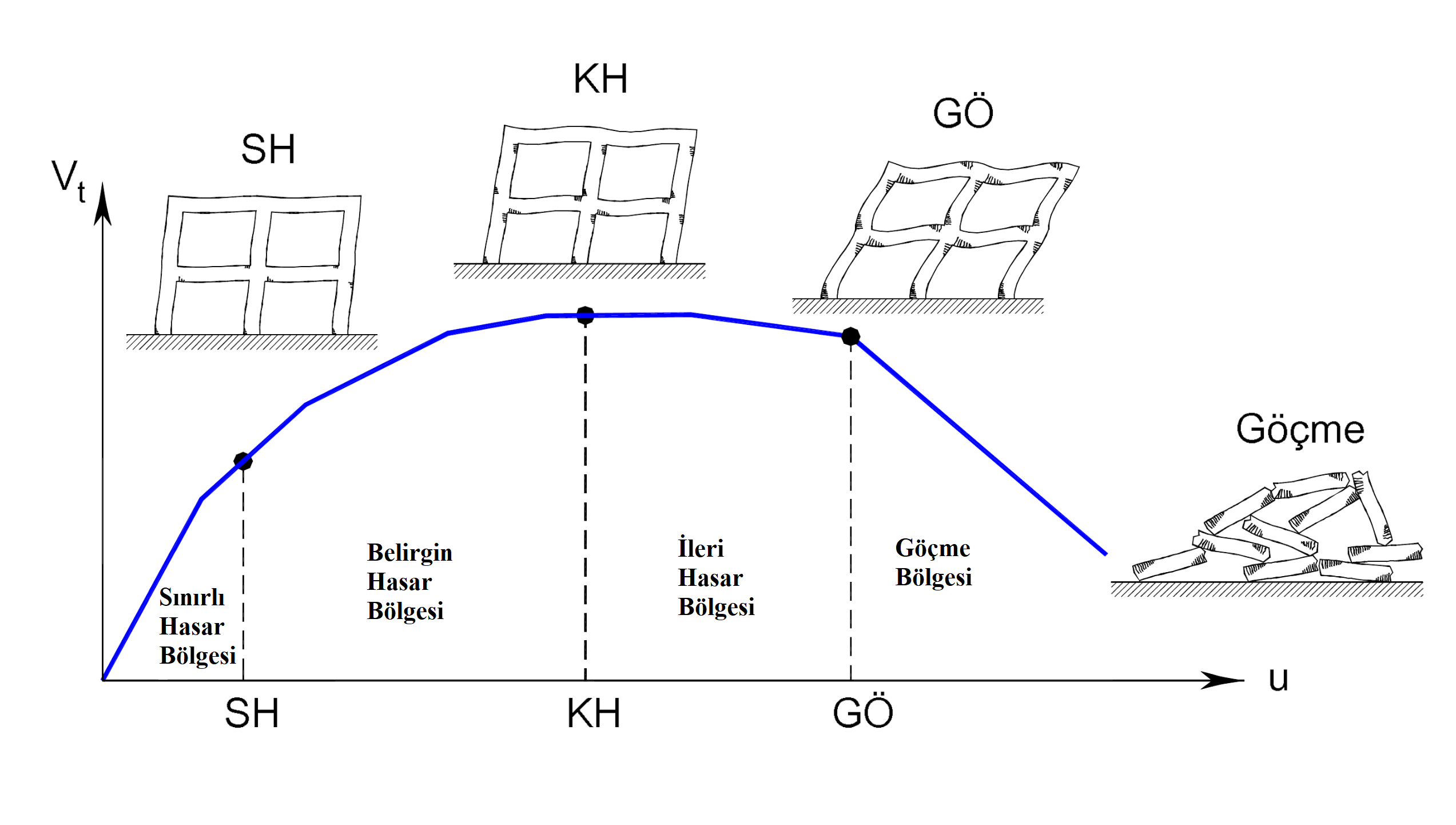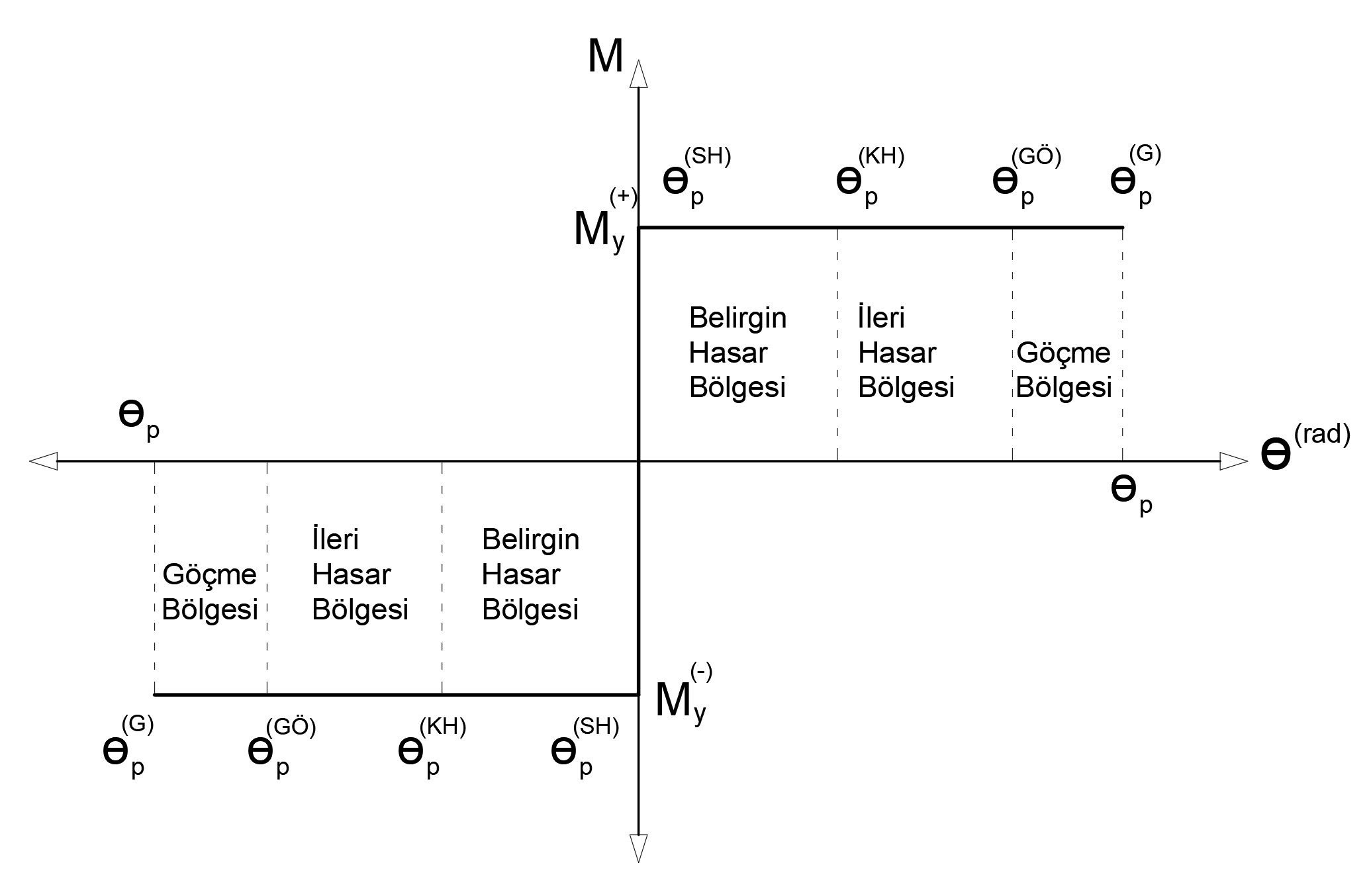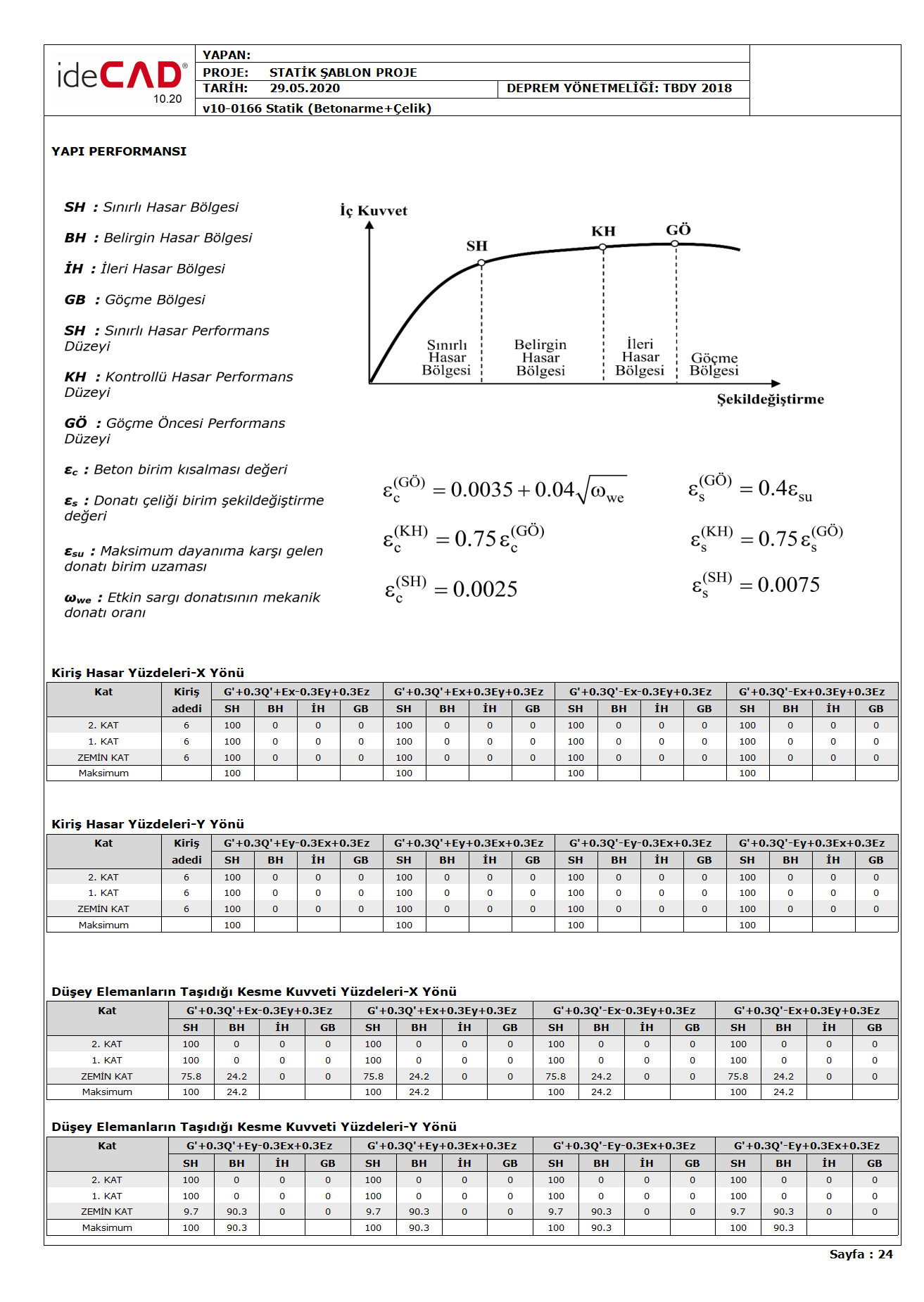15.8.2
According to the linear or non-linear calculation methods of existing buildings, the element performance under the effect of earthquake is automatically determined according to the limit values given in 15.7 .
The building performance level of the current building whose employee performance is determined is determined automatically.
ICONS
SH = Limited Damage
KH = Controlled Damage
MM = Pre-
Collapse ε c (DAM) = Allowable confined concrete unit shortening limit for Pre- migration performance level
ε c (KH) = Allowable confined concrete unit shortening limit for Controlled Damage performance level
ε c (SH) = Confined concrete unit shortening limit allowed for Limited Damage performance level
ε c = Unit strain value of concrete
ε s (GÖ) = allowable reinforcement steel strain limit for the Preventing Failure performance level
ε s (KH) = Allowable reinforcing steel strain limit for Controlled Damage performance level
ε s (SH) = Allowable reinforcement for Limited Damage performance level steel strain limit
ε s = Reinforcement strain per unit value
θ p (KH) = Allowable plastic rotation limit for Controlled Damage performance level [rad]
θp (GÖ) = allowable plastic rotation limit for the Preventing Migration performance level [rad]
θ p (SH) = Allowable plastic rotation limit for Limited Damage performance level [rad]
Evaluation and Design According to Strain existing buildings (ŞGDT) in determining the approach to seismic performance TBDY Section 15.5 as described in the linear calculation methods or TBDY Chapter 15.6 "as described in the non-linear calculation method after seismic analysis with TBDY Section 15.7 according element performance is determined. While determining the element performance, the element unit deformation or plastic rotation demand values of all elements in the structure (column, beam, curtain) are the element unit deformation or plastic rotation limits determined in Article 15.7.1.3 of TBDY .compared with. As a result of this comparison, the performance of each element is determined.
Elements whose critical section damage does not reach SH are located in the Restricted Damage Zone , the elements between SH and KH in the Significant Damage Zone , the elements between KH and GÖ in the Advanced Damage Zone , and the elements exceeding the DE are located in the Migration Zone . . The damage zone and limit values of each element are shown in the graphic below.

For example, any of the plastic hinge plastic rotation (plastic rotation prompt) θ p ,
If the Limited Damage (SH) is less than the limit value, θ p (SH) , the element is in the Restricted Damage Zone , θ p <θ p (SH)
If the Limit Damage (SH), θ p (SH) and Controlled Damage (KH), θ p (KH) is between the limit values, the element is in the Significant Damage Zone , θ p (SH) <θ p <θ p (KH)
Controlled Damage (KH), θ p (KH) and Pre-Immigration (PISG), θ p (PISG) limit values between the elements Advanced Damage Zone 'in, θ p (KH) <θ P <θ p (PISG)
Elements exceeding the pre-migration (GÖ), θ p (GÖ) limit value In the Immigration Area , θ p > θ p (GÖ)
takes place. The limit values of plastic hinges are plotted on the moment-plastic rotation graph shown below. The Limited Damage (SH) value is shown at the zero point as can be seen. In this case, the cross section plastic non-rotation deformations remained within elastic limits.

A similar comparison is made for the unit deformation values. For example, in the distributed plastic behavior model defined in any shear element, the concrete pressure strain demand ε c and for reinforcing steel the strain ε s values
If the Limited Damage (SH) is smaller than the limit values ε c (SH) - ε s (SH) , the element is in the Limited Damage Region , ε c < ε c (SH) and ε s < ε s (SH)
If the limit values of Limited Damage (SH), ε c (SH) - ε s (SH) and Controlled Damage (HR), ε c (HR) - ε s (HR) are between the limit values, the element is in the Significant Damage Region , ε c (SH) ) < ε c <ε c (KH) and ε s (SH) < ε s <ε s (KH)
If the Controlled Damage (HR) is between the limit values of ε c (HR) - ε s (HR) and Pre-Fall (AR), ε c (AR) - ε s (AR) the element is in the Advanced Damage Zone , ε c (AR) ) < ε c <ε c (AR) and ε s (AR) < ε s <ε s (AR)
Pre-Fall (AE), ε c (AE) - Elements exceeding ε s (AE) limit value In the Failure Region , ε c > ε c (AE) and ε s >ε s (AE)
takes place.
After deciding on the performance of each element , the earthquake performance of the building is determined according to TBDY Sections 15.8.3, 15.8.4, 15.8.5 and 15.8.6 .

Next Topic
